

Damion Smy
Boxy new KGM Musso unveiled to take on HiLux and Ranger ahead of Australian launch
10 Minutes Ago
The Kia Rio Sport is a handsome and well-packaged little hatchback let down by one major flaw. Unfortunately, it’s a hard one to ignore.
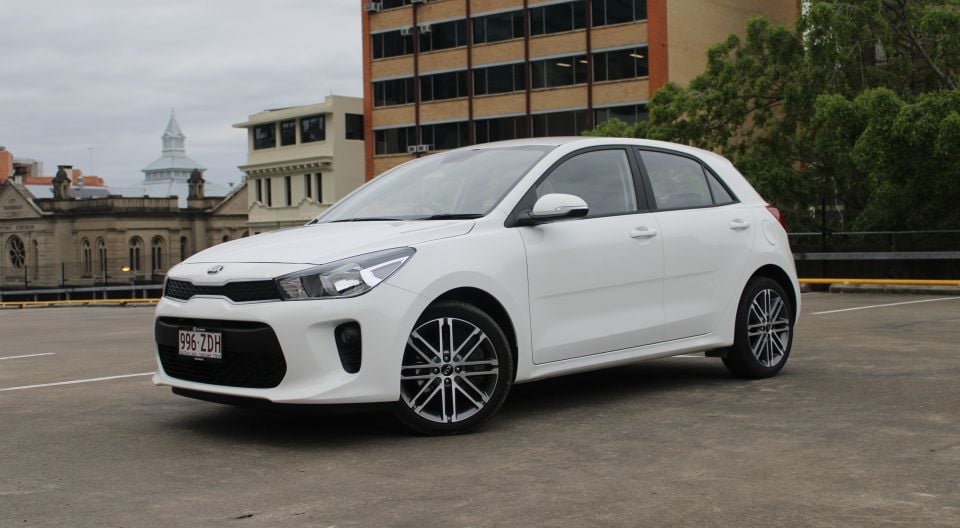
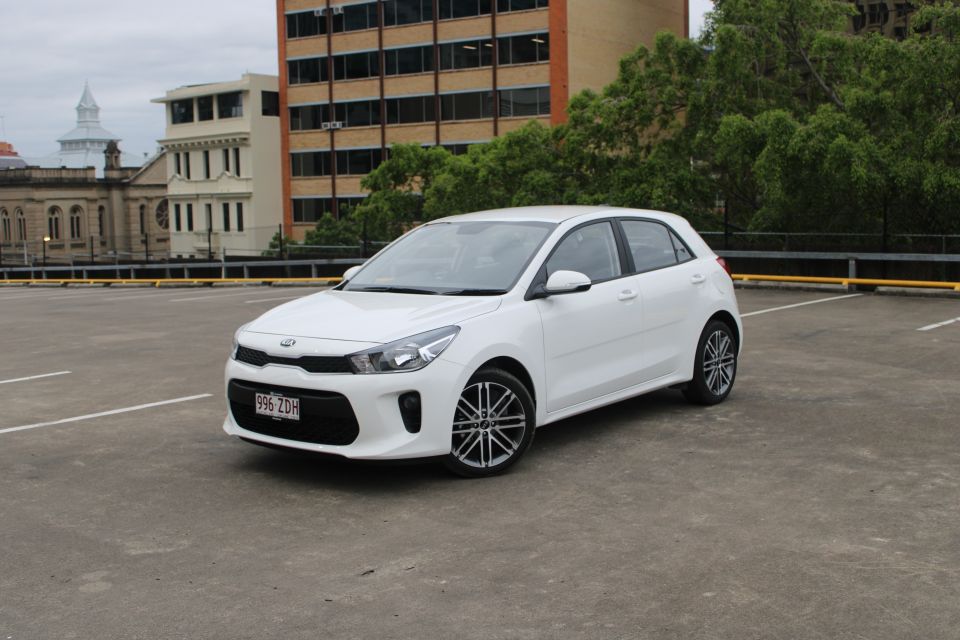

News Editor
New from
$16,990
excl. on-roads

News Editor
New from
$16,990
excl. on-roads


News Editor
New from
$16,990
excl. on-roads

News Editor
New from
$16,990
excl. on-roads
Quickly see how this car stacks up against its competition. Select any benchmark to see more details.
Where expert car reviews meet expert car buying – CarExpert gives you trusted advice, personalised service and real savings on your next new car.
Companies like Ford and even Hyundai are pulling out of the light car segment, but Kia continues to offer both a light car, the Rio, and a micro car, the Picanto.
That makes a Kia dealership a logical stop for someone looking for a new, small car. That seven-year, unlimited-kilometre warranty also proves a tantalising draw.
With the best-selling Accent disappearing from Hyundai showrooms, there’s a huge chunk of volume up for grabs.
Fighting for a bigger piece of the light car segment are stalwarts like the Honda Jazz, Mazda 2, Suzuki Swift, Toyota Yaris and Volkswagen Polo, while the upstart MG 3 is rapidly making inroads.

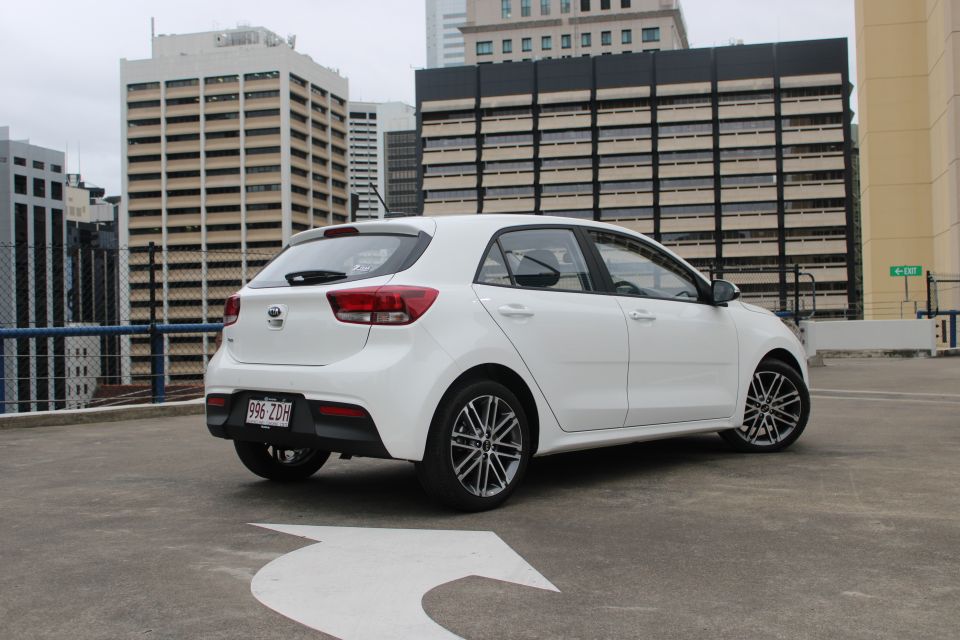
That’s some tough competition for the Kia Rio, last redesigned in 2017. Initially, it makes a good impression.
At $18,290 before on-road costs for the six-speed manual and $20,590 before on-road costs for the six-speed auto, the Rio Sport commands a premium over the Rio S of $800 and $1000, respectively.
Buy your new car without the stress. It's fast, simple and completely free.

Great service from Travis and team, second time I have used this business would not hesitate to recommend them to anyone
Craig C.
Purchased a Ford Ranger in Sunshine Coast, QLD
CarExpert helped Craig save thousands on his Ford Ranger, now let us save you on your next new car.
Find a dealThe extra money over the Rio S is well spent, at least for superficial reasons. The Sport adds attractive, 17-inch alloy wheels and a chunky, tactile leather-wrapped steering wheel and shifter.
In addition, the Sport has (regular) cruise control, heated and power-folding mirrors and a six-speed automatic instead of the four-speed ‘box of the S.
Standard on both the Sport and S are a 7.0-inch touchscreen infotainment system with Android Auto and Apple CarPlay, automatic headlights, a reversing camera, and power windows.
Both also have halogen daytime running lights which look like the mandatory DRLs you’d see on cars in snowy countries in the 1990s. To get Kia’s hipper LED ice-cube lights, you need to pony up for the Rio GT-Line.

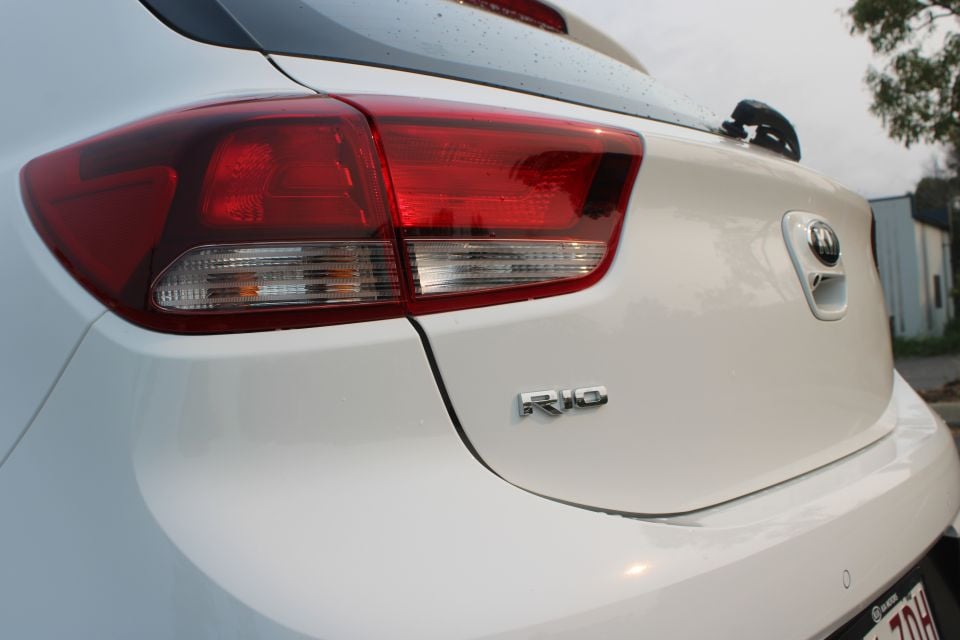

Logically, you might think the Rio – particularly this mid-range Sport – would have all the features of a base Picanto and then some. Alas, that’s not the case.
Though they boast a five-star ANCAP rating from 2017, the base S and Sport trims of the Rio miss out on autonomous emergency braking and forward collision warning.
That not only compares poorly with the cheaper Picanto, it also means the Rio Sport falls short of similarly-priced rivals like the Suzuki Swift GL Navigator with Safety Pack.
To get AEB in a Rio, you have to shell out $23,590 for the range-topping GT-Line.
As a further demerit, Rio prices have increased $500 compared to 2019 models.
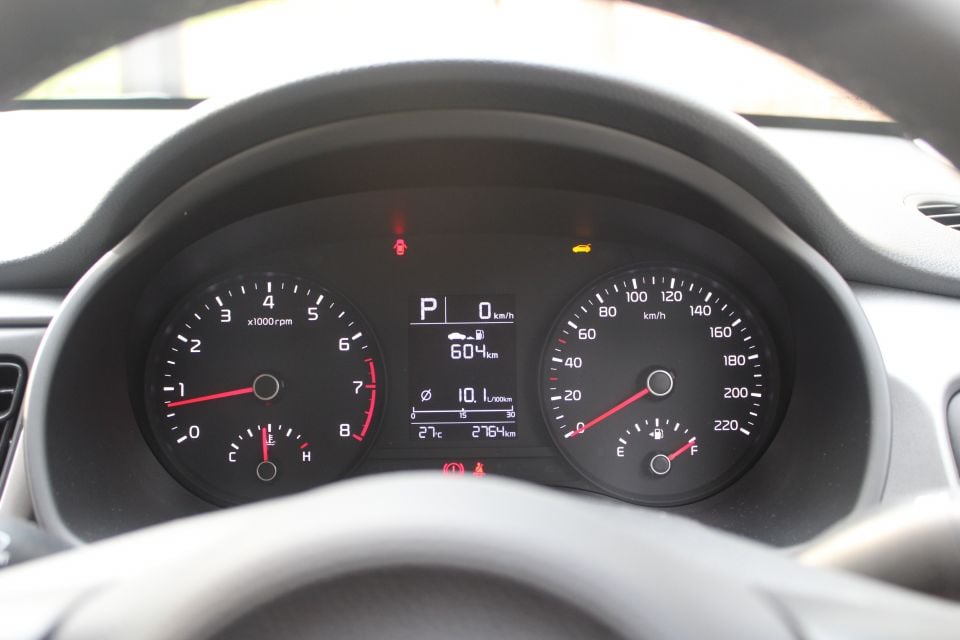


Inside, the Kia’s infotainment system remains hard to fault. The user interface is legible and modern and there’s no unseemly lag.
If you’d prefer, you can simply activate Apple CarPlay or Android Auto and never have to look at the regular interface. You’ll need to use one of these for navigation anyway as the Rio Sport doesn’t have factory sat-nav.
Unfortunately, the Rio’s six-speaker stereo system produces a washed-out sound that couldn’t be alleviated by fiddling with the settings.
The leather-wrapped shifter and wheel help elevate an interior that’s otherwise rather drab.
The cloth seats are comfortable, pleasant to the touch, and appear hard-wearing. But whatever happened to the more upbeat patterned upholstery of the 1990s?
The Rio Sport features black and grey seats in a black cabin. There’s no reprieve from this monochromatic colour scheme, with even the contrasting trim across the dash finished in dark grey.
This isn’t altogether unusual for the segment, nor is the complete lack of soft-touch plastics, but a splash of colour would help make the ambience a little less funereal.
While the dashboard design is inoffensive and modern in the Kia style, it lacks the flair of a Mazda 2 or the upcoming Toyota Yaris.
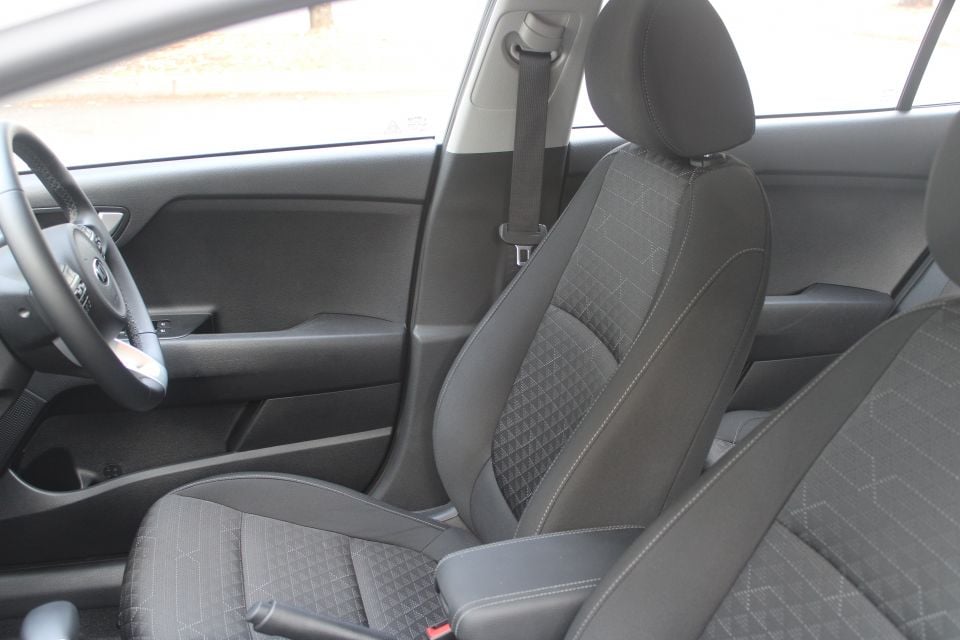


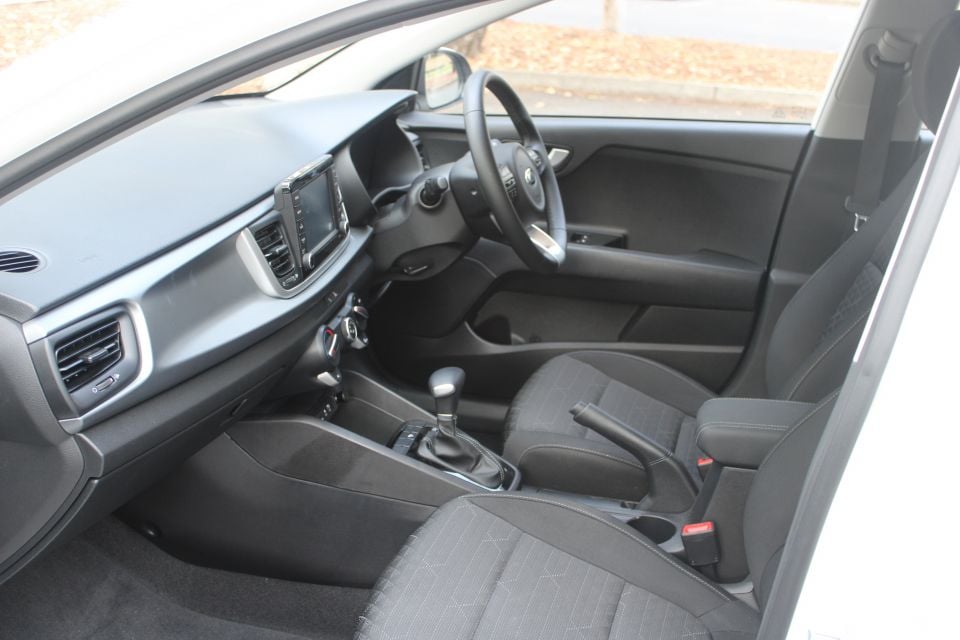
The headliner feels thin and cheap but arguably the worst parts of the interior are the injection-moulded plastic door panels.
They’re trimmed entirely in hard, black plastic, lacking matching cloth or contrasting trim. Then again, that’s also par for the class.
The doors themselves close with a solid enough thunk but they feel rather light, too.
Kudos to Kia, however, for upholstering the front seatbacks when some more expensive cars simply use hard plastic.
You’ll also find a decent amount of room back there. With the front seats adjusted for a 180cm occupant, your knees will touch the seatbacks (good thing they’re upholstered!) but you don’t feel completely hemmed in.
There’s also a good amount of both head and foot room and a single USB port, albeit no rear air vents.
Would you want to go on a long road trip in the back of a Rio? Probably not, but you should be relatively comfortable pottering around town.
If you have youngsters who need a child seat, you’ll find three top-tether and two ISOFIX mounting points.
There’s also a boot capable of swallowing two large suitcases and a couple of overnight bags. It’s spacious with 325L of cargo volume, although that’s down around 30L from a Honda Jazz or Volkswagen Polo.
It expands to a cavernous 980L with the rear seats folded down, although again the Jazz reigns victorious.
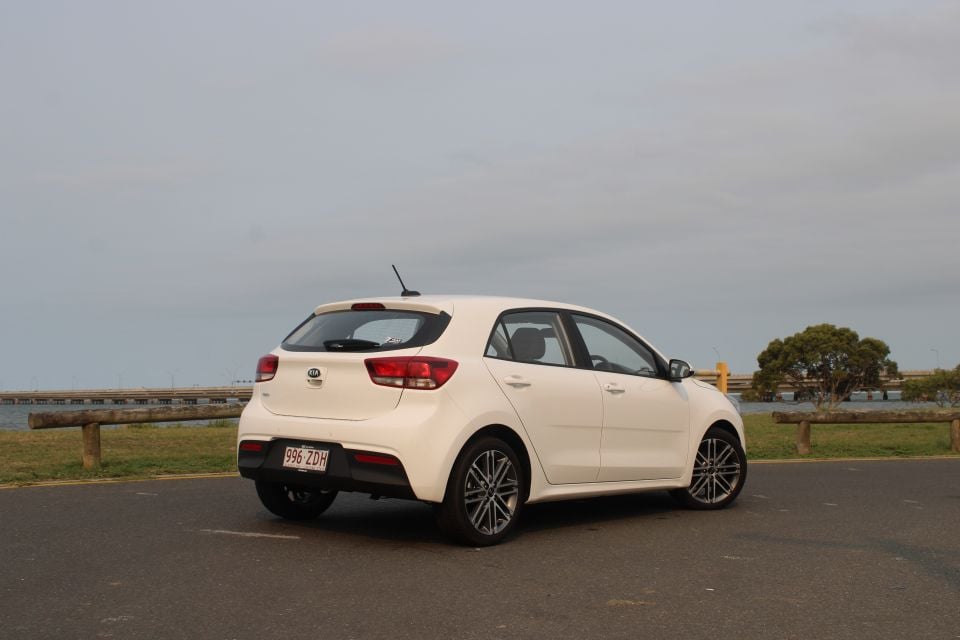
The Rio has slightly more power than the smaller Picanto, with a naturally-aspirated 1.4-litre four-cylinder engine producing 74kW of power at 6000rpm and 133Nmof torque at 4000rpm.
That’s up 12kW and 11Nm over the 1.3-litre unit in most Picantos.
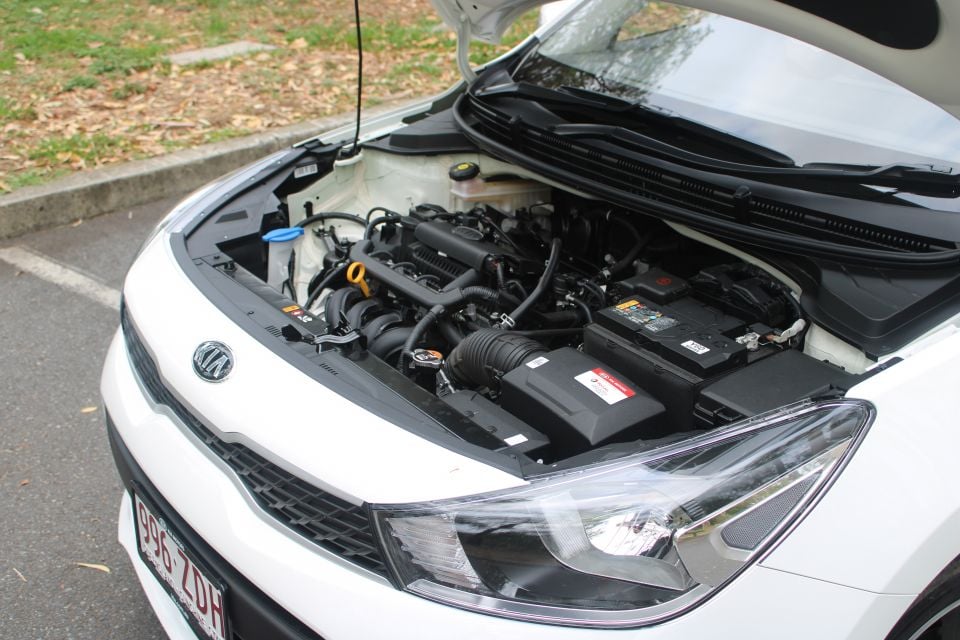
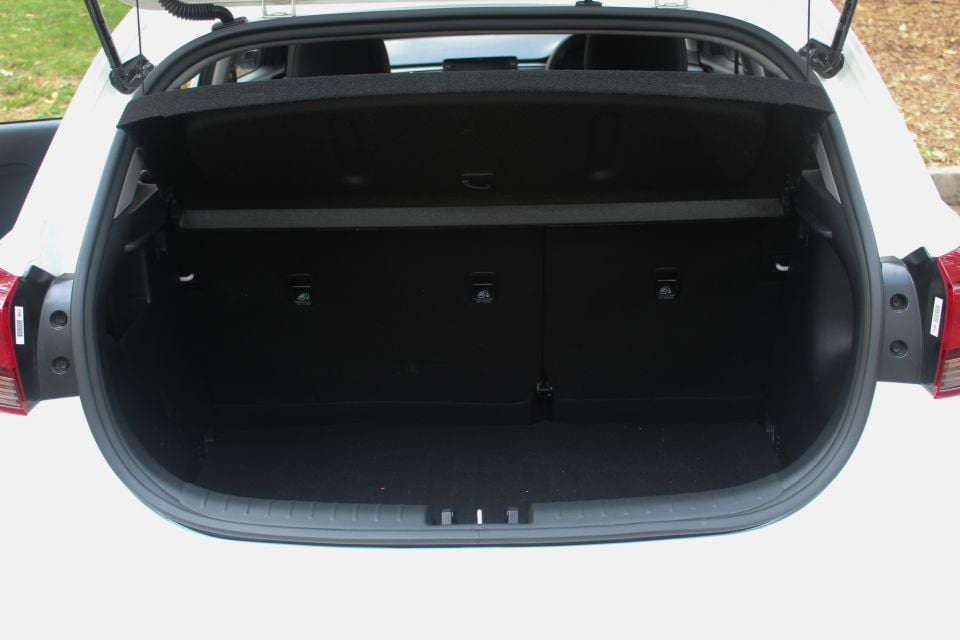
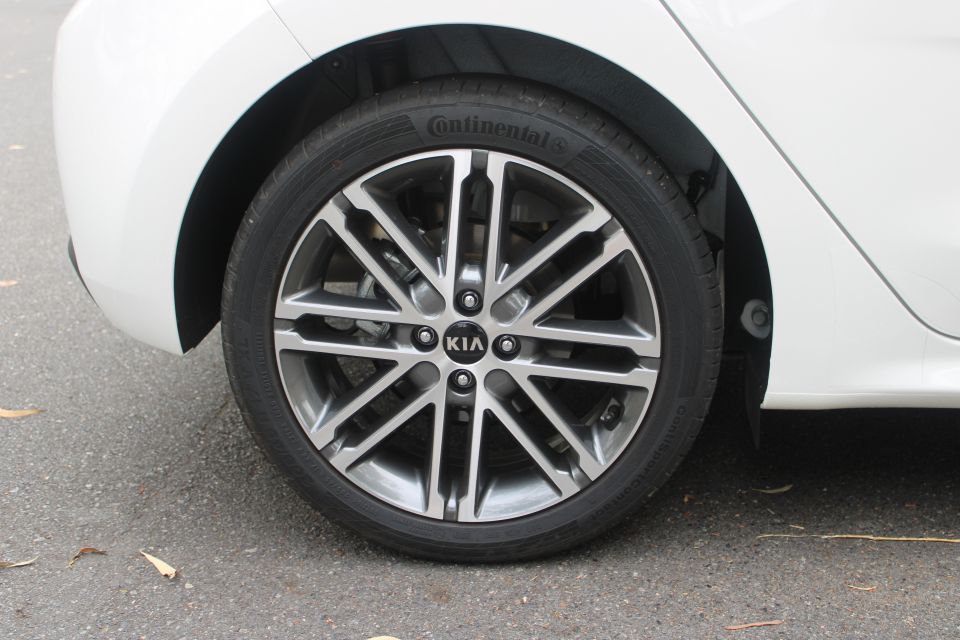
Surprisingly, the Rio is at its most comfortable on the highway. Unlike the smaller Picanto, the Rio will happily spin away at 2250rpm at 100km/h.
There are no pained sounds from the engine bay and there’s minimal wind noise, but for a noticeable pattering coming from the top of the windscreen.
You’ll also notice some tyre noise but it’s altogether quite pleasant at high speeds.
The flipside to that is the Rio is less impressive at low speeds. That is to say, it’s actually a bit unpleasant in urban driving, precisely the place in which a light car is expected to thrive.
The transmission feels overwhelmed when downshifting then upshifting again, such as when you take two corners in quick succession.
Waiting for the gears to change and for the car to get back up to speed is an exercise in frustration.
All the while, the Rio moans and groans. On your first drive, you might think the Rio’s 1.4-litre has a pleasantly gruff engine note, perhaps even ever so slightly sporty.
Drive around long enough, however, and the sound will grate on you.
It’s omnipresent, too, given the lack of low-end torque. If you’re considering a Rio, your commute best not involve any steep hills.

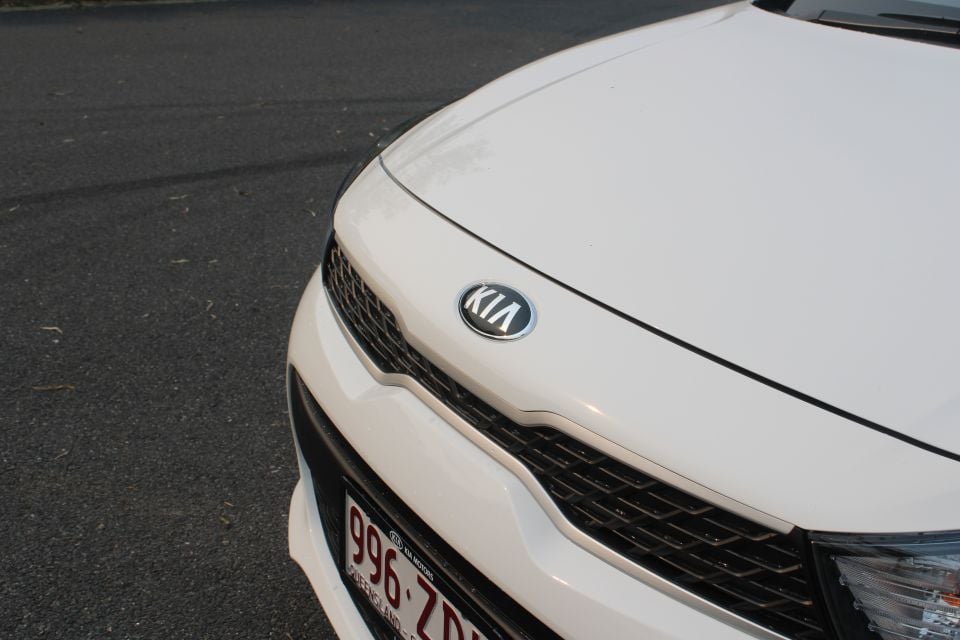
It’s really disappointing as the Rio has an ace up its sleeve: terrific damping.
The local suspension tuning of the Rio has yielded remarkably compliant ride quality over even the most rutted, battle-scarred roads.
Sure, you’ll notice bumps as you drive over them but they’re nicely damped, the Rio feeling like a much more expensive car.
It’s really rather nice, especially considering there’s a simple torsion-beam at the rear of the Rio.
The Rio’s chassis feels as though it could handle a lot more power than the 1.4-litre can muster.
If you want to shell out more money, the GT-Line has a turbocharged 1.0-litre three-cylinder and a seven-speed dual-clutch automatic. It has only 14kW more under the bonnet but it also has (hallelujah!) 39Nm more torque.

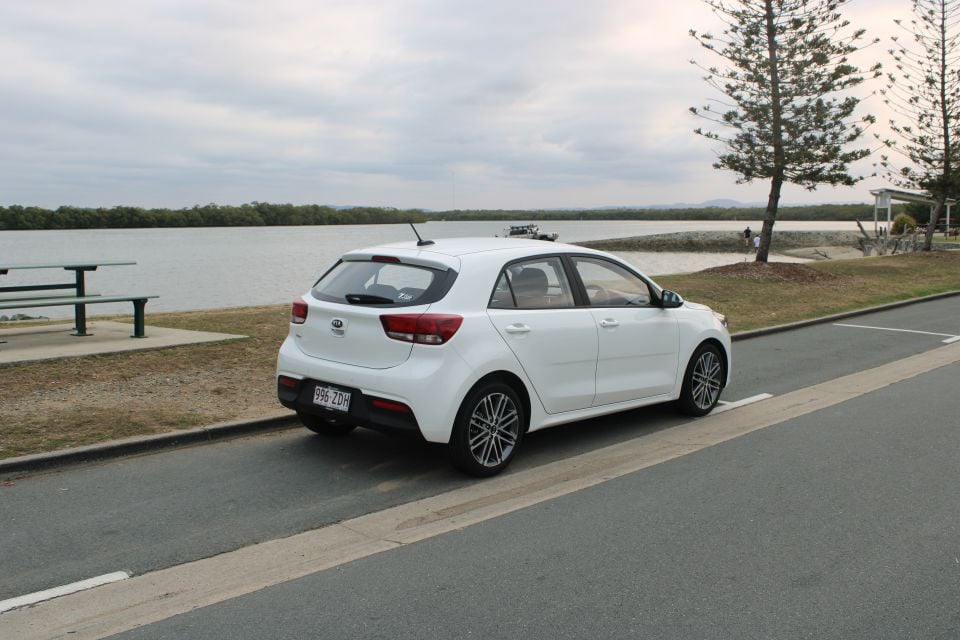
Unfortunately, the Rio Sport is too slow to be much fun. That’s a shame as it has nice, neutral handling, staying impressively flat in corners.
The electrically-assisted steering is pleasant and light, although it could use more feel. Ditto the brakes.
The Rio Sport’s lack of grunt means you really have to wring its neck, which of course means fuel economy suffers.
Though it only requires 91RON, in a mix of urban and highway driving the Rio Sport mustered 9.0L/100km.
That’s way off the claimed 6.0L/100km combined figure, and worse than the claimed urban figure of 7.8L/100km.
It’s yet more proof the Rio Sport’s powertrain is its Achilles’ heel.
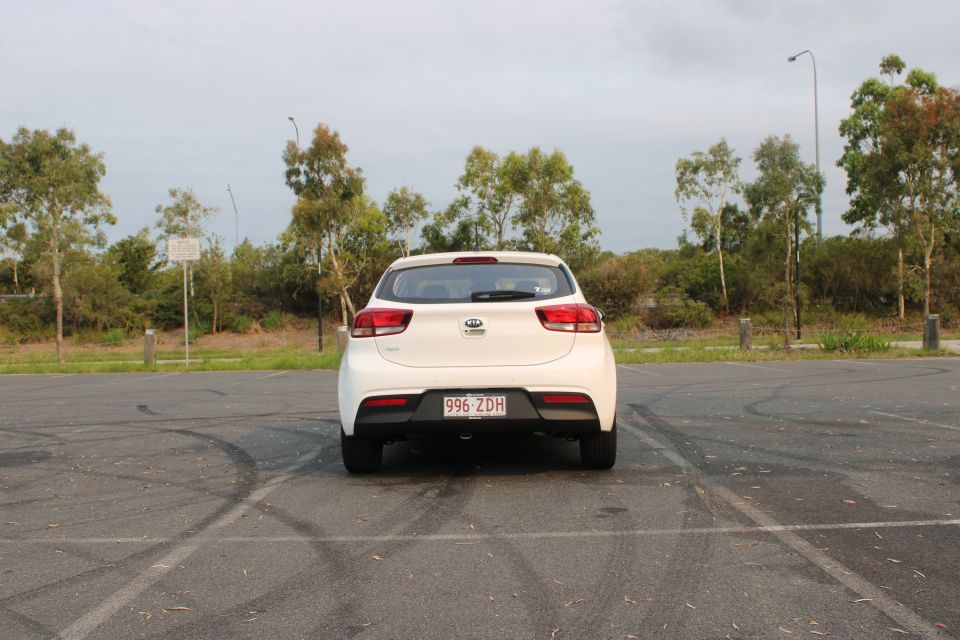
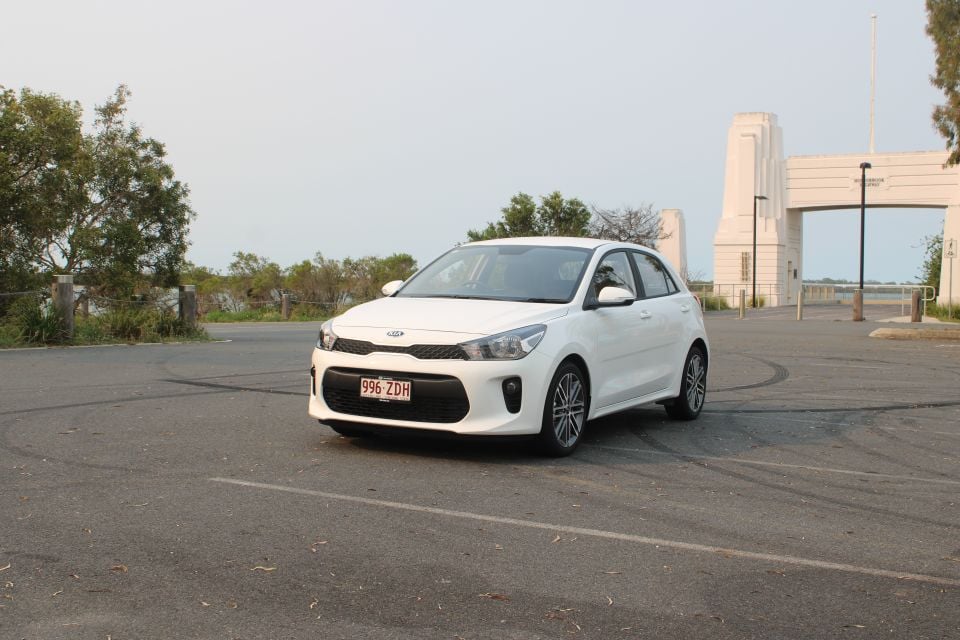
All Rios come with the same seven-year, unlimited-kilometre warranty. Also included are seven years of capped-price servicing.
Services are at intervals of 15,000km and cost $269, $470, $323, $623, $303, $586 and $322, respectively.
For many years, the automatic option in a light car sacrificed fuel economy and drivability for convenience. To truly get the most out of a light car’s little engine, you had to choose the manual option.
Opting for a manual Rio won’t disguise its noisiness, and it won’t put colourful speckles in its dark cabin.
It should, however, make the most of a disappointing engine in an otherwise well-packaged little hatchback that rides with a compliancy belying its price point.
Where expert car reviews meet expert car buying – CarExpert gives you trusted advice, personalised service and real savings on your next new car.
William Stopford is an automotive journalist with a passion for mainstream cars, automotive history and overseas auto markets.


Damion Smy
10 Minutes Ago


Damion Smy
1 Hour Ago


Damion Smy
3 Hours Ago


Damion Smy
5 Hours Ago


Damion Smy
6 Hours Ago


Damion Smy
7 Hours Ago